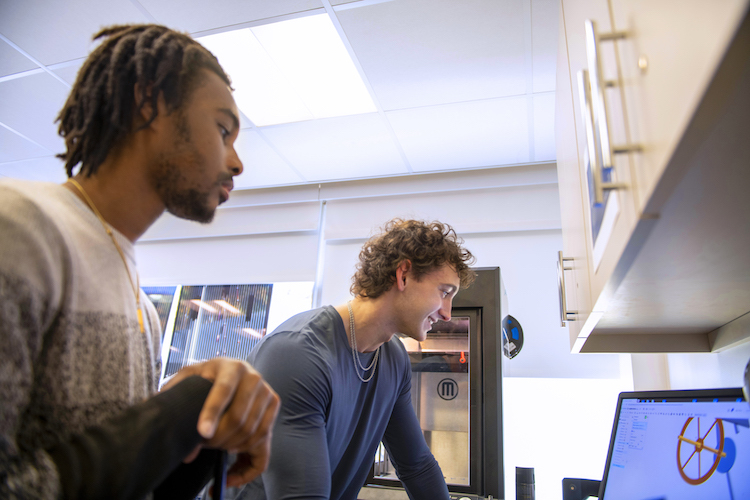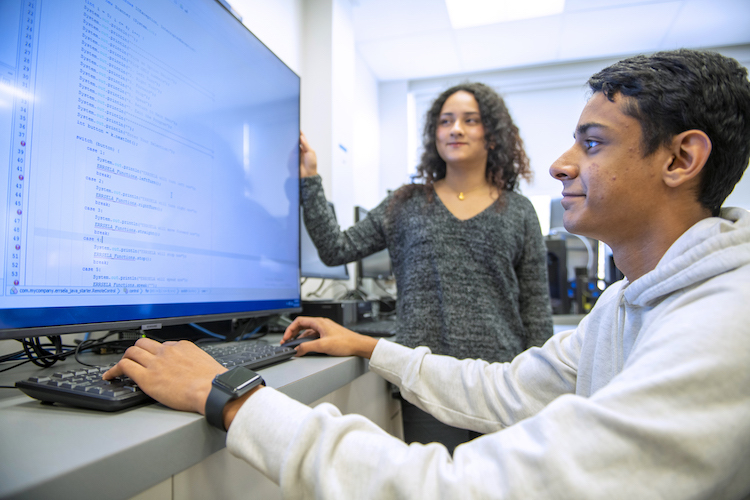
NASA Technology Transfer Expansion (T2X) is working with the New York Tech (NYIT) Entrepreneurship and Technology Innovation Center (ETIC), a business incubator focused on prototyping, to turn patents on paper into demonstratable prototypes. ETIC student employees develop and fabricate novel technology prototypes and accompanying marketing material using NASA patents.
This year, under the continued contract, New York Tech student employees will take on six new projects, prototyping a suite of assistive technologies that help make knowledge, communication, and buildings more accessible.
"The students have to deliver a working product and all the tech that goes along with it, all the working pieces," said ETIC Director Michael Nizich, Ph.D.
Student employees work collaboratively and ideate around solutions, developing novel low-fidelity prototypes from just a NASA patent. Joanna Sroka, Junior Computer Science, and Data Science major, said, “Building prototypes for NASA and working as a team has been the most exciting part of ETIC. We learn from each other and gain experience working with new technologies to implement them into our prototypes." Students learn how to work collaboratively on multi-disciplined teams to successfully deliver physical products on a deadline, applying what they learn in the classroom and the lab.
These technology prototypes have immediate real-world applications. During the Tech Transfer Ideation studio in Atlanta, GA, the T2X team demonstrated the prototype Filtering Molecules with Nanotube Technology, a health medicine and biotech technology out of Johnson Space Center, conceived to eliminate contaminants from water or other molecules. This pilot program brought together community leaders and entrepreneurs to discuss the challenges of addressing issues related to sustainability in their communities using NASA-developed technology. "Watching participants connect the dots between the climate challenges in their communities, the NASA Patent Portfolio, and the physical prototype was like watching a lightbulb turn on in the room. Everyone just got it, and there was a lot of excitement about it." Said Mikaela McShane NASA T2X Communications Director.
Beginning with 5 student employees, the program now involves close to 30 students. Dr. Michael Nizich, Director of ETIC, stated, “I run several voluntary groups, including a mentor and certificate programs that attract the most proactive students, who are natural candidates for the prototyping program.”

The student engineers’ mentor the volunteers, teaching them about prototyping and gaining valuable leadership skills. The program is self-sustaining; as student employees graduate, the volunteers they trained and mentored can move into their roles and carry on their work.
“It’s amazing to see how far this program has come. After every meeting, I’m left in a state of awe at how creative and smart these students are. Their ability to take a patent and create a working device we can use to demonstrate our technology to potential licensees is such a neat tool for us. This program provides real, hands-on experience for our next generation of STEM, with tangible and intangible benefits to NASA’s T2X Program.” Samantha Kilgore, T2X Lead, NASA Goddard Space Flight Center.



